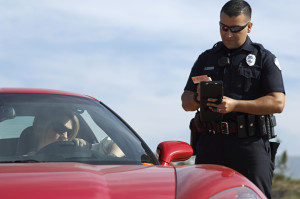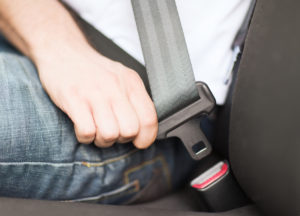 Summer vacation is just about here, and the fantastic weather, holiday celebrations and long weekends mean it’s time for some traveling! Whether you’re hitting the road or boarding a plane, there are a few things you can do in advance for a smooth, stress-free vacation.
Summer vacation is just about here, and the fantastic weather, holiday celebrations and long weekends mean it’s time for some traveling! Whether you’re hitting the road or boarding a plane, there are a few things you can do in advance for a smooth, stress-free vacation.
Flying and Driving Tips
When you’re flying, you hope for a turbulence-free flight. Although this may be out of your control, here are a number of items you can personally plan from the time you check-in until the time you leave your destination’s airport for ‘bump-free’ travels:
1. Purchase your airline tickets early, and make sure to use your name exactly as it appears on your identification. While you might not always use your given or legal name, or the name listed on your form of identification, this is the name that officials will be looking for when you check in.
2. Arrive at the airport early. With heightened safety measures being taken by the Transportation Security Administration, the TSA lines can be long, and there can often be delays. It’s important to be ready to go when your plane is boarding, and arriving early can bring you peace of mind. It is recommended to arrive at the airport 2 hours before any domestic flight, and at least 3 hours before any international flight.
3. Update your passport. Some states have now mandated an updated passport. Research the requirements before you board, and give the government enough time to process a passport update. Typically, passport updates and renewals take about eight weeks; expediting your update for an additional fee can be done in about two to three weeks.
4. Mark your luggage. Tie a ribbon or colored strap to the handle, consider a piece of unique fabric, or find another creative way to make your luggage stand out from the crowd. This will help you move faster through when it comes time to pick up your bags.
If you choose to hit the open road this summer, preparing in advance can help prevent you from having to put the “hazard lights” on your entire trip:
1. Ensure your car has had the proper maintenance. Before you load up to leave, make sure you’ve had an oil change and checked the air pressure in your tires. If you have any hesitations, take your car in for a tune-up. Don’t forget to bring a spare tire, first aid kit, and road kit, and fill your tank up with gas before you leave.
2. Know where you’re going. Bring along a programmed navigational system. Whether you have an aftermarket GPS or your vehicle has a built-in system, make sure to program the directions before you leave, as many systems are automatically turned off when the vehicle is in motion. You should also consider bringing a fully charged cell phone and physical map as backups.
3. Never drive tired. Too many accidents happen each year because of tired drivers. Check your map before you go to find appropriate stops to sleep. Whether you find a relative’s house along the way or stop at a hotel, give yourself ample time to rest.
4. Prep for passengers: If you’re traveling with children, make the trip comfortable for them, as well. Car games, toys, electronics, snacks, drinks and special “car packs” can help keep them entertained, fed and hydrated, while cutting down on the ever-popular “Are we there yet?” question.
Finally, regardless of how you travel, always keep your house protected. Don’t post your travel plans or itinerary online. This can tip off burglars that you’ll be out of town, and will help to prevent any break-ins. It’s also a good idea to ask a trusted friend or family member to check on your home, bring in the mail, and give the impression that someone is at home.
Wherever or however you decide to travel this summer, try to take as many precautionary measures as possible to ensure a happy, safe journey for your entire family. This includes staying properly hydrated! When the beating summer sun is out, it can do unspeakable damage to the human body. For information on how heat and dehydration can hurt your body internally, click here!

 The summer season is just kicking off, and it’s the perfect weather for road trips, hopping in the car and heading to a park, or just going on a leisurely, scenic drive. With more people on the roads, the chances are greater that motorists will commit traffic violations of all sorts. There are seven, though, that can be especially serious. These driving infractions in Connecticut are severe enough to not only raise your auto insurance premium but can also carry some hefty legal penalties.
The summer season is just kicking off, and it’s the perfect weather for road trips, hopping in the car and heading to a park, or just going on a leisurely, scenic drive. With more people on the roads, the chances are greater that motorists will commit traffic violations of all sorts. There are seven, though, that can be especially serious. These driving infractions in Connecticut are severe enough to not only raise your auto insurance premium but can also carry some hefty legal penalties. No one expects to be in a car accident, but in the off chance that it does happen you need to be prepared. If you find yourself in this unfortunate situation, the following steps will help you weather the storm with as little distress as possible.
No one expects to be in a car accident, but in the off chance that it does happen you need to be prepared. If you find yourself in this unfortunate situation, the following steps will help you weather the storm with as little distress as possible.
 Towards the beginning of September, people begin to notice that change is in the air. The air gets colder, the days get shorter, and the leaves begin to evolve into a kaleidoscopic splendor. The Autumn season is quickly approaching, and homeowners must take the proper precautions to ensure their home will survive the sometimes harsh weather conditions of the later months in the year. Here are 10 tips for home maintenance that will prepare you for fall in New England:
Towards the beginning of September, people begin to notice that change is in the air. The air gets colder, the days get shorter, and the leaves begin to evolve into a kaleidoscopic splendor. The Autumn season is quickly approaching, and homeowners must take the proper precautions to ensure their home will survive the sometimes harsh weather conditions of the later months in the year. Here are 10 tips for home maintenance that will prepare you for fall in New England: If you have ever received a traffic ticket, your first instinct may have been to fight it – after all, many people believe that the citation was unjust and that they did not deserve the harsh penalty that they received. However, roughly only 3 percent of drivers who receive traffic citations actually contest them in court, and choosing to do so relies purely on the circumstances surrounding the ticket. You’ll want to ask yourself the following questions before you consider fighting Connecticut traffic violations
If you have ever received a traffic ticket, your first instinct may have been to fight it – after all, many people believe that the citation was unjust and that they did not deserve the harsh penalty that they received. However, roughly only 3 percent of drivers who receive traffic citations actually contest them in court, and choosing to do so relies purely on the circumstances surrounding the ticket. You’ll want to ask yourself the following questions before you consider fighting Connecticut traffic violations Connecticut drivers aren’t strangers to driving in the snow. However, we can all use a little reminder as to what to do to properly prepare for the winter season; which can put exponential wear and tear on your vehicle. There are a few simple precautions you can take to help your car survive the winter in good condition. Wear and tear cannot only affect the life of your vehicle, but also your car insurance premiums.
Connecticut drivers aren’t strangers to driving in the snow. However, we can all use a little reminder as to what to do to properly prepare for the winter season; which can put exponential wear and tear on your vehicle. There are a few simple precautions you can take to help your car survive the winter in good condition. Wear and tear cannot only affect the life of your vehicle, but also your car insurance premiums. From the moment a young driver receives his or her driver’s permit and well into their adult years, the ability to drive becomes a tent-pole for independence and transportation. However, like many other factors that can begin to diminish with age, certain individuals lose the ability to drive for a number of reasons once they reach senior citizen status. It is important for Connecticut driving seniors to stay sharp and identify when they might start having difficulty operating a motor vehicle. While it may not be ideal, certain seniors may need to make the decision to turn over their car keys indefinitely for the safety of themselves and other motorists on the road.
From the moment a young driver receives his or her driver’s permit and well into their adult years, the ability to drive becomes a tent-pole for independence and transportation. However, like many other factors that can begin to diminish with age, certain individuals lose the ability to drive for a number of reasons once they reach senior citizen status. It is important for Connecticut driving seniors to stay sharp and identify when they might start having difficulty operating a motor vehicle. While it may not be ideal, certain seniors may need to make the decision to turn over their car keys indefinitely for the safety of themselves and other motorists on the road. Connecticut personal umbrella insurance is a safeguard that protects you from incurring unexpected expenses as the result of an accident. And while this sounds like the pitch for the auto and homeowners insurance policies that you already have, it’s actually a bit different.
Connecticut personal umbrella insurance is a safeguard that protects you from incurring unexpected expenses as the result of an accident. And while this sounds like the pitch for the auto and homeowners insurance policies that you already have, it’s actually a bit different.
 Misconceptions Regarding Seat Belts:
Misconceptions Regarding Seat Belts: